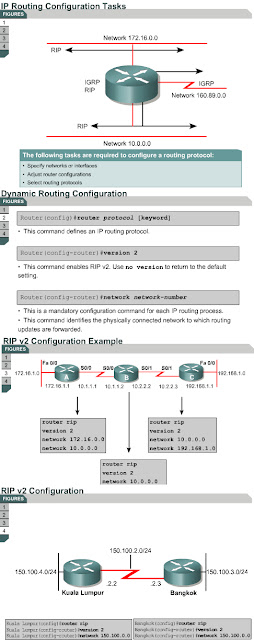Compare and contrast distance vector and link-state routing
2.1.6 This page will compare distance vector and link-state routing protocols.
2.1.6 This page will compare distance vector and link-state routing protocols.
All distance vector protocols learn routes and then send these
routes to directly connected neighbors. However, link-state routers advertise
the states of their links to all other routers in the area so that each router
can build a complete link-state database. These advertisements are called
link-state advertisements or LSAs. Unlike distance vector routers, link-state routers
can form special relationships with their neighbors and other link-state
routers. This is to ensure that the LSA information is properly and efficiently
exchanged.
The initial flood of LSAs provides routers with the information
that they need to build a link-state database. Routing updates occur only when
the network changes. If there are no changes, the routing updates occur after a
specific interval. If the network changes, a partial update is sent
immediately. The partial update only contains information about links that have
changed. Network administrators concerned about WAN link utilization will find
these partial and infrequent updates an efficient alternative to distance
vector routing protocols, which send out a complete routing table every 30
seconds. When a change occurs, link-state routers are all notified
simultaneously by the partial update. Distance vector routers wait for
neighbors to note the change, implement the change, and then pass the update to
the neighbor routers.
The benefits of link-state over distance vector protocols include
faster convergence and improved bandwidth utilization. Link-state protocols
support CIDR and VLSM. This makes them a good choice for complex and scalable
networks. In fact, link-state protocols generally outperform distance vector
protocols on any size network. Link-state protocols are not implemented on
every network because they require more memory and processor power than
distance vector protocols and can overwhelm slower equipment. Another reason
they are not more widely implemented is the fact that link-state protocols are
quite complex. Link-state routing protocols require well-trained administrators
to correctly configure and maintain them.
This page concludes this lesson. The next lesson will introduce a
link-state routing protocol called OSPF. The first page will provide an
overview.











